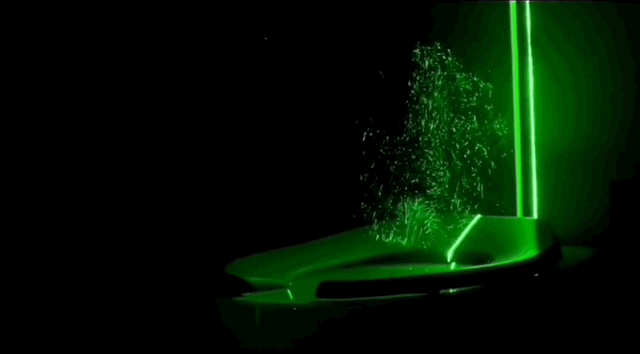Scientists have documented the sight of thousands of droplets when flushing toilets, which can carry bacteria to other surfaces.
In a study published in the journal Scientific Reports, researchers at the University of Colorado Boulder (USA) recorded the droplet spray when users flush toilets in public restrooms.

Droplets when flushing the toilet. (Photo: John Crimaldi).
The researchers directed a laser beam towards the toilet to create a blue light, making it easier to observe the droplets when flushing. Analysis results showed that particles could shoot up to 1.5 meters high, reaching speeds of 2 meters per second after 8 seconds of flushing.
Larger particles (5-10 micrometers, about the size of red blood cells) fall more slowly than smaller particles. They can remain airborne and continue to settle on other surfaces in the restroom, potentially carrying viruses and bacteria.
“People know that toilets can spray particles but cannot see it. Our research indicates that they are a strong cluster of particles, spreading faster than some might realize,” said Professor John Crimaldi, co-author of the study.
According to Gizmodo, this is one of the reasons users should limit their use of public restrooms. Previous studies have shown that when flushing toilets, dirty water droplets, viruses, or bacteria can be aerosolized into the air, increasing the risk of landing on the body or entering the respiratory tract, which can cause illness.

Setup of the laser beam directed at the toilet and sensor for results. (Photo: John Crimaldi).
Most previous research only analyzed the composition of the particles. In contrast, the University of Colorado Boulder study demonstrates how they are propelled into the air through video, in greater quantities and speeds than imagined.
“If you can’t see them, it’s easy to pretend they don’t exist. But when you see this imagery, your thoughts about flushing the toilet will change. By creating a visual representation of this process, our study could play a crucial role in conveying public health messages,” Professor Crimaldi added.


















































